Reading: Top programming languages for data scientists in 2022
Top programming languages for data scientists in 2022
If you are considering starting a data science career, the sooner you start coding, the better. Learning to code is a critical step for every aspiring data scientist. However, getting started in programming can be daunting, especially if you don’t have previous coding experience.
To choose the right programming language, we must first look at what data scientists do in their daily work. A data scientist is a technical expert who uses mathematical and statistical techniques to manipulate, analyze and extract information from data. There are many domains within the data science realm, from machine learning and deep learning, to network analysis, natural language processing, and geospatial analysis. To perform their tasks, data scientists rely on the power of computers. Programming is the technique that allows data scientists to interact with and send instructions to computers.
There are hundreds of programming languages out there, built for diverse purposes. Some of them are better suited for data science, providing high productivity and performance to process large amounts of data. However, this group still comprises a good number of programming languages.
In this article, we will look at some of the top data science programming languages for 2022, and present the strengths and capabilities of each of them.
- Python
- R
- SQL
- Java
- Julia
- Scala
- C/C++
- JavaScript
- Swift
- Go
- MATLAB
- SAS
Python
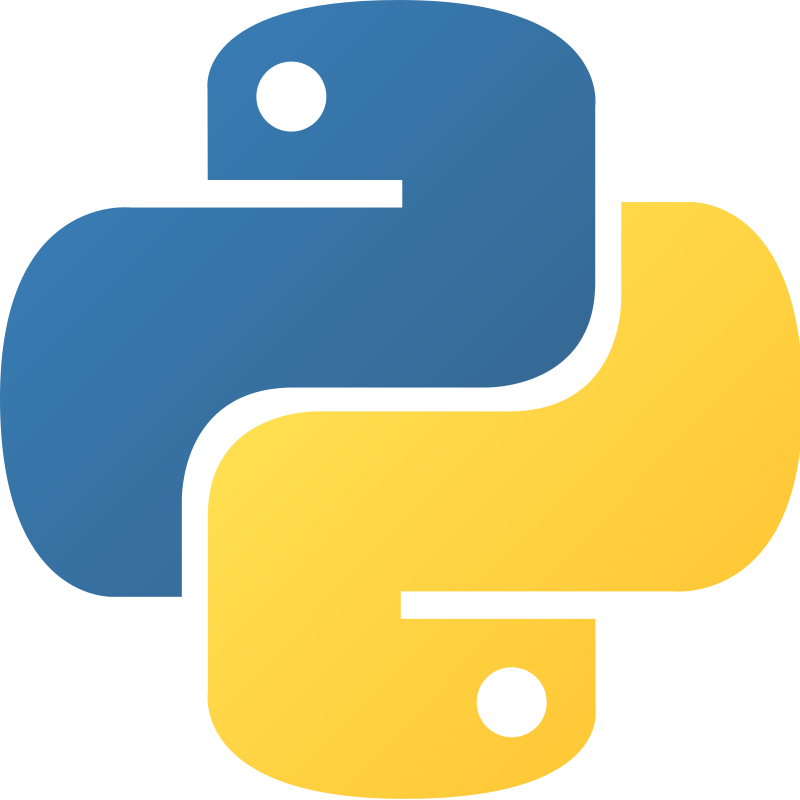
Ranked first in several programming languages popularity indices, including the TIOBE Index and the PYPL Index, the popularity of Python has boomed in recent years. Python is an open-source, general-purpose programming language with broad applicability not only in the data science industry, but also in other domains, like web development and video game development.
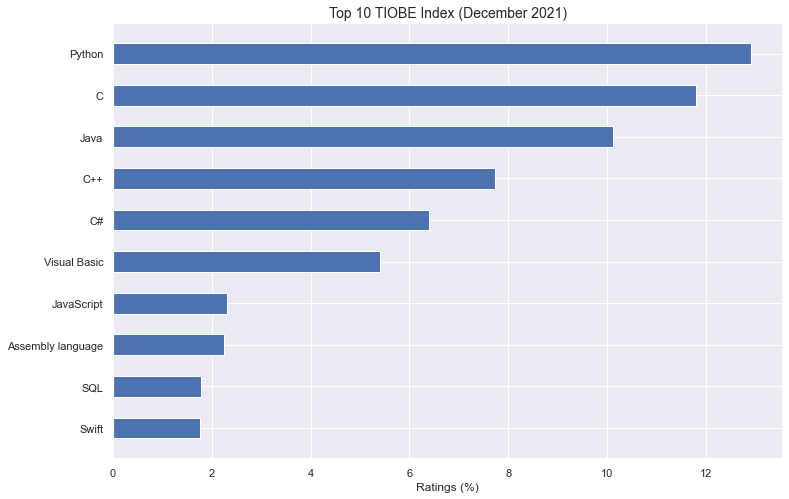
Any data science tasks you can think of can be done with Python. This is mainly thanks to its rich ecosystem of libraries. With thousands of powerful packages backed by its huge community of users, Python can perform all kinds of operations, from data preprocessing, visualization, and statistical analysis, to the deployment of machine learning and deep learning models. Here are some of the most used libraries for data science and machine learning purposes:
NumPy: is a popular package that offers an extensive collection of advanced mathematical functions. Many packages are based on Numpy objects, like the famous NumPy arrays.
pandas: is a key library in data science, used for performing all kinds of manipulation of databases, also called DataFrames.
Matplotlib: the standard Python library for data visualization.
scikit-learn: built on top of NumPy and SciPy, it has become the most popular Python library for developing machine learning algorithms.
TensorFlow: developed by Google, it is a powerful computational framework for developing machine learning and deep learning algorithms.
Keras: an open-source library designed to train neural networks with high performance.
Due to its simple and readable syntax, Python is often referred to as one of the easiest programming languages to learn and use for beginners. If you are new in data science and don’t know which language to learn first, Python is one of the best options.
If you want to be a Python expert, DataCamp is here to help. Check out the Python courses in our catalog and start your training to become a successful data scientist.
R
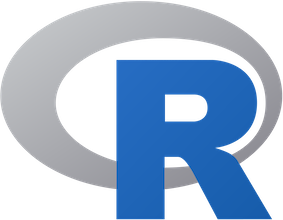
Not yet as highly trending as Python according to the popularity indices, R is a top option for aspiring data scientists. Frequently portrayed in data science forums as the main competitor of Python, learning one of these two languages is a critical step to break into the field.
R is an open-source, domain-specific language, explicitly designed for data science. Very popular in finance and academia, R is a perfect language for data manipulation, processing and visualization, as well as statistical computing and machine learning.
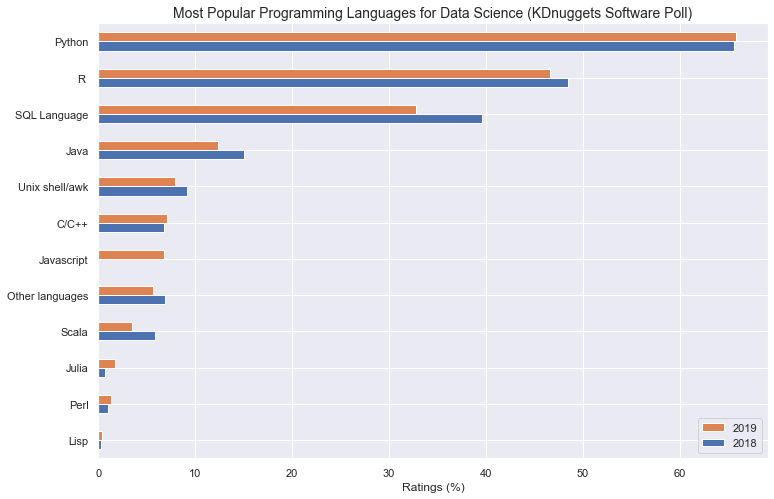
Like Python, R has a large community of users and a vast collection of specialized libraries for data analysis. Some of the most notable ones belong to Tidyverse family, a collection of data science packages. It includes dplyr, for data manipulation, and the powerful ggplot2, the standard library for data visualization in R. As for machine learning tasks, libraries like caret will make your life much easier when developing your algorithms.
Although it is possible to work with R directly on the command line, it is common to use Rstudio, a powerful third-party interface that integrates various capabilities, such as data editor, data viewer, and debugger.
Whether you are new to data science or want to add new languages to your arsenal, learning R is a perfect choice. Check out our rich catalog of R courses to start sharpening your skills.
SQL
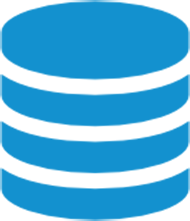
Much of the world's data is stored in databases. SQL (Structured Query Language) is a domain-specific language that allows programmers to communicate with, edit and extract data from databases. Having a working knowledge of databases and SQL is a must if you want to become a data scientist.
Knowing SQL will enable you to work with different relational databases, including popular systems like SQLite, MySQL, and PostgreSQL. Despite the tiny differences between these relational databases, the syntax for basic queries is pretty similar, which makes SQL a very versatile language.
Whether you choose Python or R to start your data science journey, you should also consider learning SQL. Due to its declarative, simple syntax, SQL is very easy to learn compared to other languages, and it will help you a lot along the way.
Want to get started in SQL? Have a look at the different SQL courses and skill tracks offered by DataCamp and get ready to become a query master.
Java
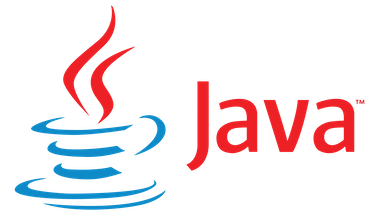
Ranked #2 in the PYPL Index #3 in the TIOBE Index, Java is one of the most popular programming languages in the world. It’s an open-source, object-oriented language, known for its first-class performance and efficiency. Endless technologies, software applications and websites rely on the Java ecosystem.
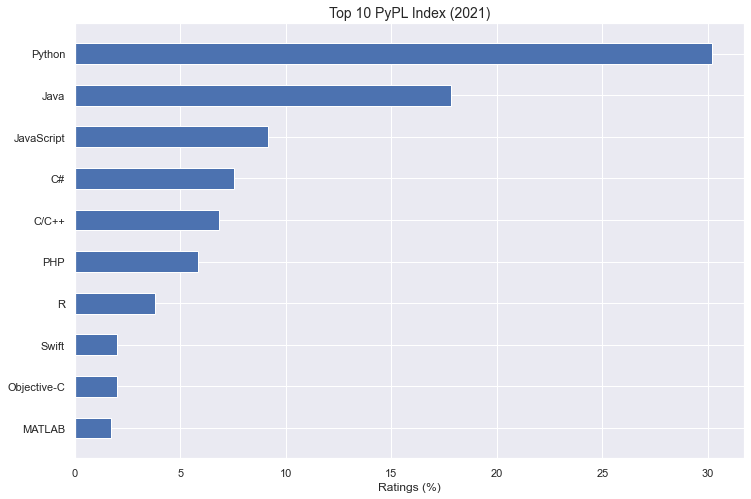
Although Java is a preferred choice when developing websites or building applications from scratch, in recent years, Java has gained a prominent role in the data science industry. This is mainly because of the Java Virtual Machines, which provide a solid and efficient framework for popular big data tools, such as Hadoop, Spark, and Scala.
Due to its high performance, Java is a suitable language for developing ETL jobs and performing data tasks that require big storage and complex processing requirements, like machine learning algorithms.
Julia
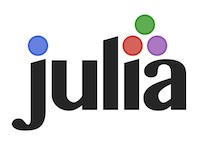
Julia can be considered a data science rising star. Despite being one of the youngest languages on this list, (it was released in 2011) Julia has already impressed the world of numerical computing. Sometimes referred to as the inheritor of Python, Julia is a highly effective tool compared to other languages used for data analysis.
Although it has gained notoriety thanks to its early adoption by several major organizations, including many in the financial industry, Julia still lacks the maturity to compete with top data science languages. It still has a small community and doesn't have as many libraries as its main competitors, Python or R.
Julia’s main downside is its youth, but there are numerous reasons to keep an eye on it. Let’s see how it evolves in the coming years.
Scala

Although it’s not very common to see Scala in the top rankings of programming languages, (it holds the #18 position in the PYPL Index and #33 in TIOBE) speaking about this programming language is mandatory in the context of data science.
Scala has recently become one of the best languages for machine learning and big data. Released in 2004, Scala is a multi-paradigmatic language explicitly designed to be a clearer and less wordy alternative to Java.
Scala also runs on the Java Virtual Machine, thereby allowing interoperability with Java and making it a perfect language for distributed big data projects. For example, the Apache Spark cluster computing framework is written in Scala.
#C/C++
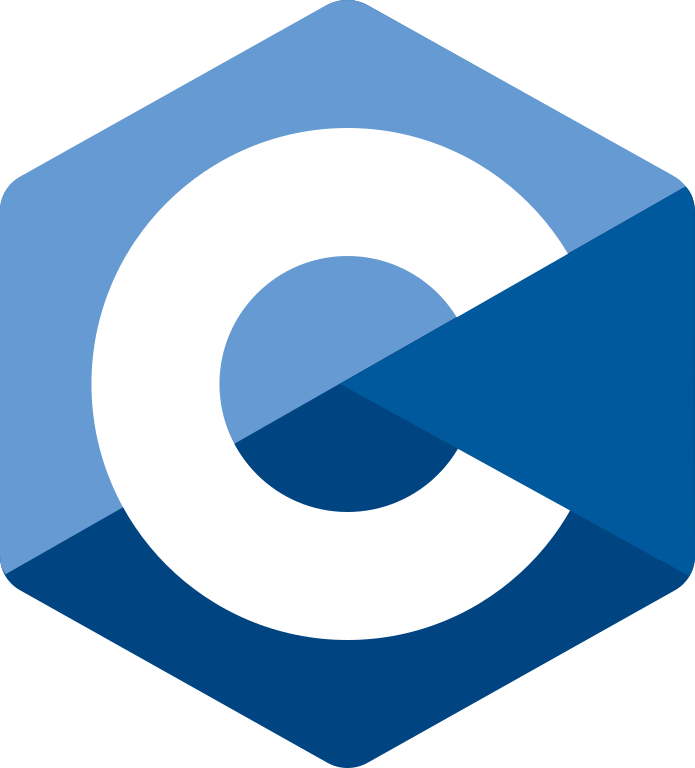
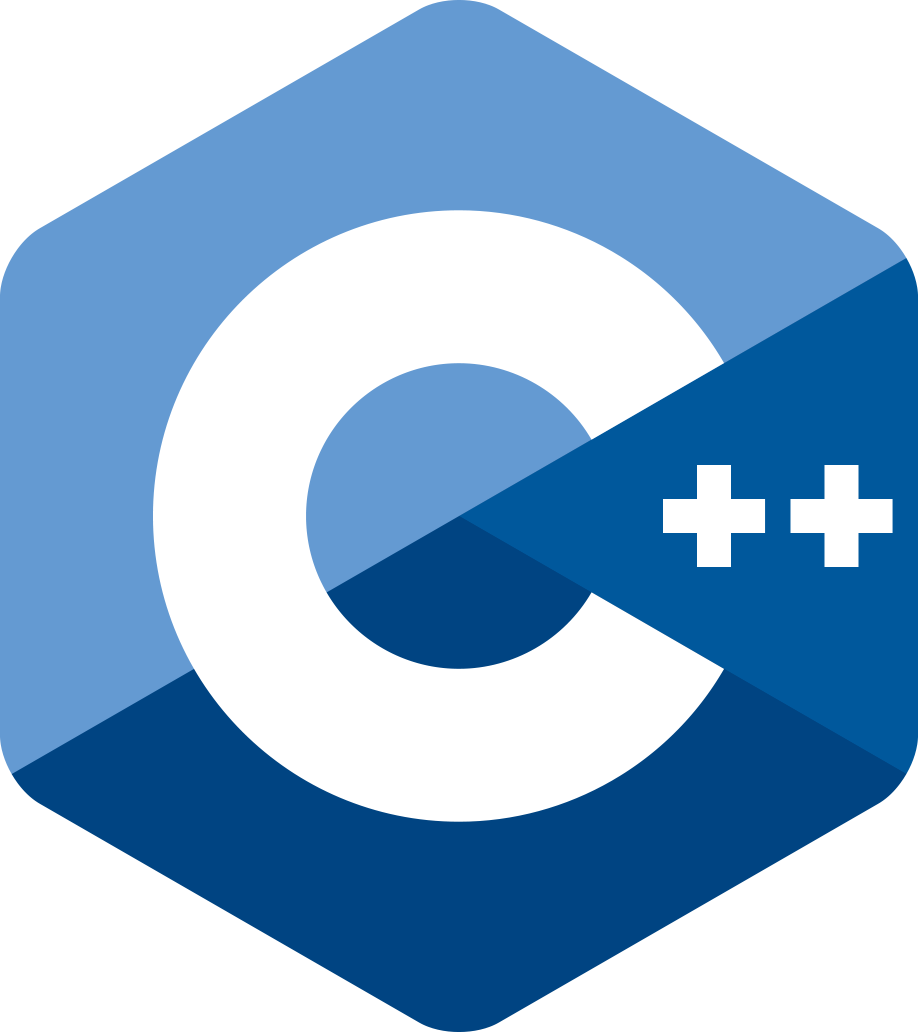
Considered two of the most optimized languages, being familiar with C and its close relative C++, can be very useful when it comes to addressing computationally intensive data science jobs.
C and C++ are comparatively faster than other programming languages, making them well-suited candidates for developing big data and machine learning applications. It isn’t a coincidence that some of the core components of popular machine learning libraries, including PyTorch and TensorFlow, are written in C++.
Due to their low-level nature, C and C++ are among the most complicated languages to learn. Therefore, although they may not be the first choices when embarking into the world of data science, once you get a solid understanding of the fundamentals of programming, mastering them is a smart move that can make a great difference to your resume.
JavaScript

JavaScript is on top of the preferred programming languages, according to the Stack Overflow Developer Survey 2021. JavaScript is a multiparadigm, versatile language, widely known for its capacity to build rich and interactive web pages.
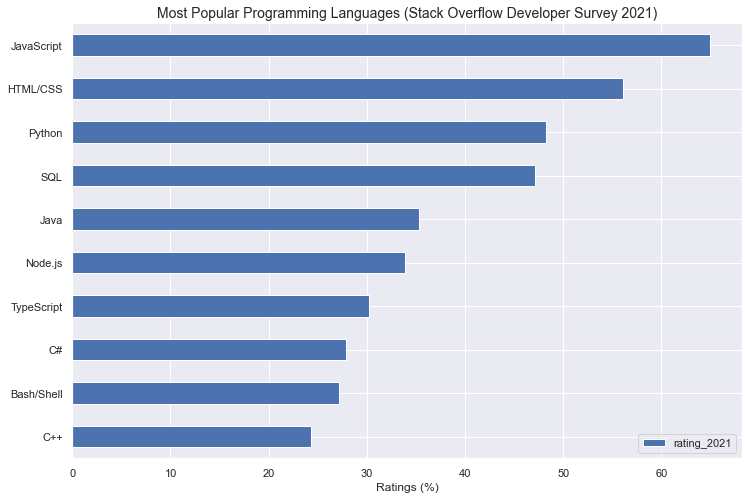
Although the majority of JavaScript users work in the web development sector, in recent years the language has gained notoriety in the data science industry. Today, JavaScript supports popular libraries for machine learning and deep learning, such as TensorFlow and Keras, as well as incredibly powerful visualization tools, like D3.
Thanks to the support of popular libraries for machine learning, and due to its broad popularity amongst web developers, it’s a smooth entry option for all front-end and back-end programmers who want to break into data science.
Swift
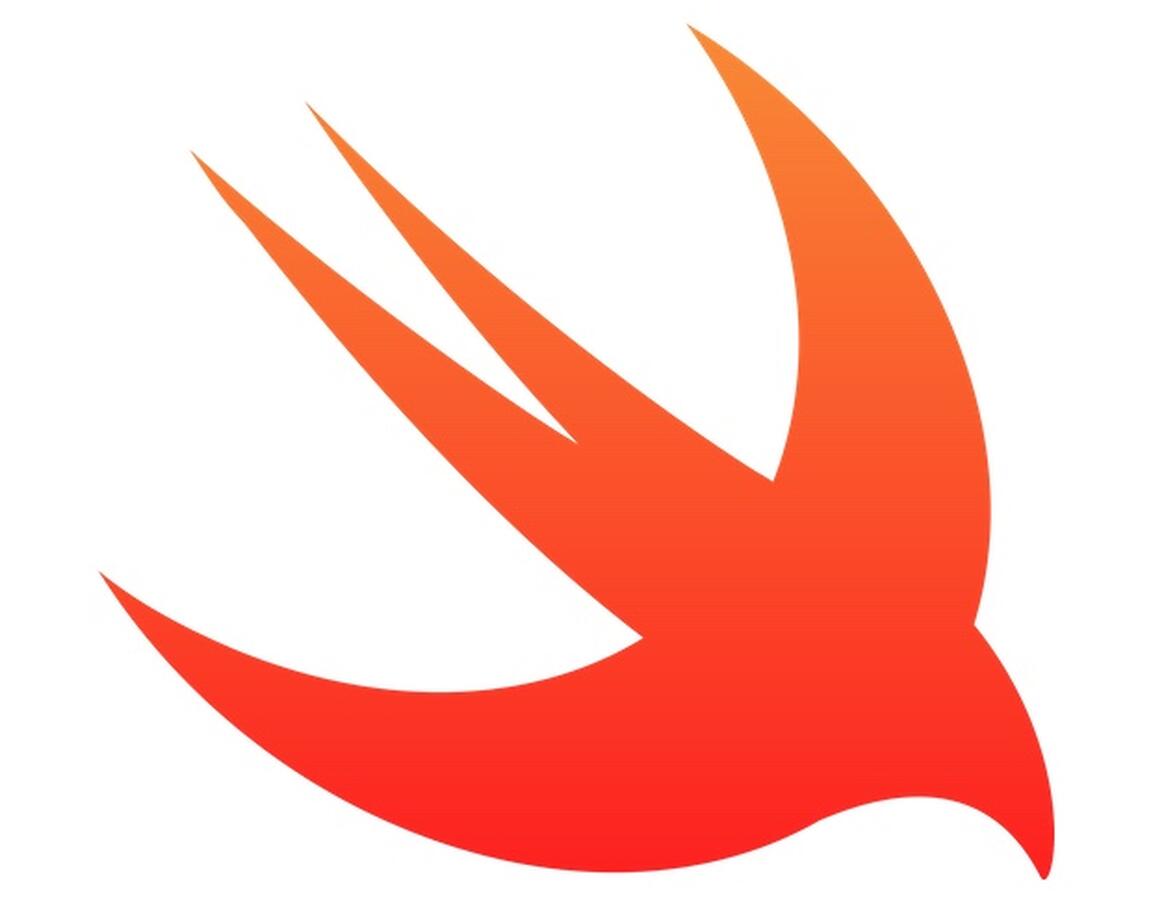
One of the downsides of Python and R is that neither of them were built with mobile devices in mind. In the coming years, we can expect an even bigger advancement of mobile, wearables and the IoT (Internet of Things). Swift was developed by Apple to make it easier to create apps and, with that, grow its app ecosystem and increase customer retention. Soon after its release in 2014, Apple and Google started working together to make it a key tool in the interplay between mobile and machine learning.
Swift is now compatible with TensorFlow and is interoperable with Python. An additional advantage of Swift is that it is no longer limited to the iOS ecosystem and it has turned open-source to work on Linux.
For these reasons, if you are a mobile developer and feel curious about data science, Swift is what you’re looking for.
Go

Go (or GoLang) is a language with increasing popularity, especially for machine learning projects. Google introduced it in 2009 with C-like syntax and layouts. According to many developers, Go is the 21st-century version of C.
More than a decade after its launch, Go is becoming extremely popular due to its flexible and easy-to-understand language. In the context of data science, Go can be a good ally for machine learning tasks. Despite its prospects, the data science community of Go is still very small.
MATLAB
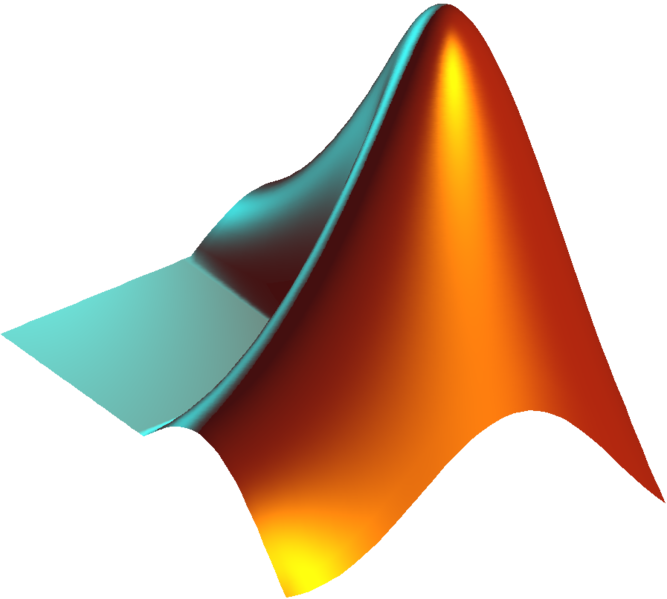
MATLAB is a language mainly designed for numerical computing. Broadly adopted in academia and scientific research since its launch in 1984, MATLAB provides powerful tools to carry out advanced mathematical and statistical operations, making it a great candidate for data science.
However, MATLAB has an important downside: it is proprietary. Depending on the case (academic, personal or business use), you may have to pay a large amount of money to get a license, making it less attractive than other programming languages that can be used for free.
SAS
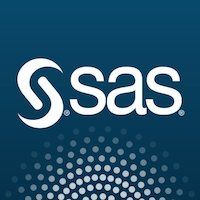
SAS (Statistical Analytical System) is a software environment designed for business intelligence and advanced numerical computing. SAS has been around for a long time, and it’s widely adopted across major firms in many sectors, creating a big market for SAS developers.
However, SAS is steadily losing popularity against other data science programming languages like Python and R. This is mainly because, as occurred with MATLAB, you need a license to use SAS. This creates a barrier to entry for new users and companies, who will feel prone to use free, open-source languages.
Conclusion
We hope this post will help you navigate the rich and diverse landscape of data science programming languages. There is no single language that is best in absolute terms to solve all the problems and situations that may arise during your work as a data scientist. However, if you are a newcomer in data science, our recommendation is to start by picking either Python or R. You can enroll in our free Introduction to Python Tutorial and Introduction to R Tutorial to see which one you like the most. From there, the key to success is patience and practice. To get hands-on programming experience, we recently launched DataCamp Workspace, an online environment to write code, apply your skills and create your data science portfolio.
Once you feel confident with your chosen language, you could level up with solid SQL training. Fortunately, DataCamp offers a good number of SQL courses.
From there, the sky's the limit. Becoming knowledgeable in multiple programming languages is an asset, and moving between languages according to the needs of your organization will help you become a versatile data scientist and develop a more successful career.
https://www.datacamp.com/blog/top-programming-languages-for-data-scientists-in-2022
